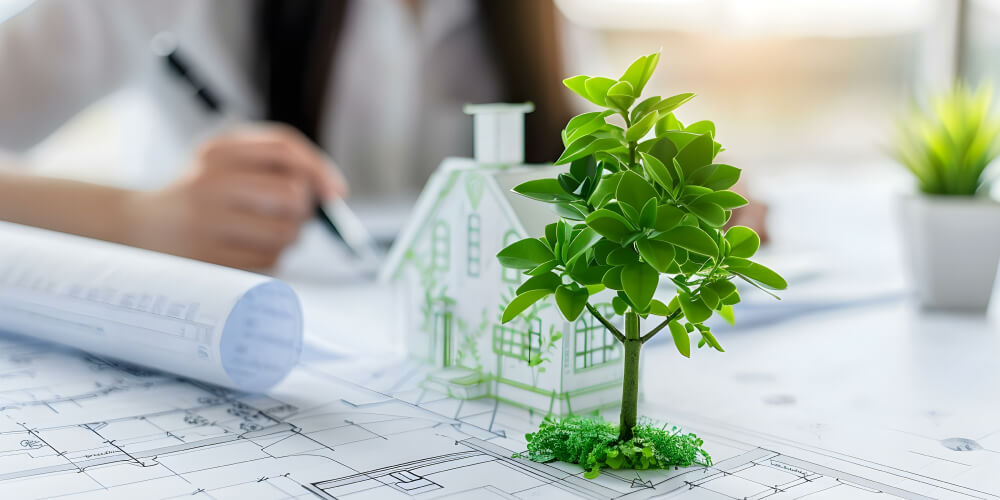1. Understanding Low-Impact Landscaping
What Is Low-Impact Landscaping?
- Sustainable Practices: Low-impact landscaping involves using eco-friendly practices and materials that minimize environmental impact. This includes conserving water, reducing chemical use, and enhancing biodiversity.
- Resource Efficiency: The goal is to create a beautiful, functional yard that uses resources efficiently and sustainably.
2. Benefits of Low-Impact Landscaping
Environmental Benefits:
- Water Conservation: By using drought-resistant plants and efficient irrigation systems, low-impact landscaping reduces water usage.
- Soil Health: Sustainable practices improve soil health by reducing erosion and increasing organic matter.
- Biodiversity: Creating habitats for local wildlife supports biodiversity and helps maintain ecological balance.
Economic Benefits:
- Lower Maintenance Costs: Eco-friendly landscaping requires less maintenance, reducing costs for water, fertilizers, and pesticides.
- Increased Property Value: A well-designed, sustainable yard can enhance property value and appeal to environmentally-conscious buyers.
Health and Well-Being:
- Reduced Chemical Exposure: Minimizing the use of chemicals creates a healthier environment for your family and pets.
- Mental Well-Being: Green spaces and natural landscapes have been shown to reduce stress and improve mental well-being.
3. Planning Your Low-Impact Landscape
Site Assessment:
- Evaluate Conditions: Assess your yard’s soil type, sunlight exposure, and existing vegetation to determine the best sustainable practices and plant selections.
- Water Flow: Identify areas where water collects and flows to design effective drainage and water conservation strategies.
Design Principles:
- Native Plants: Choose native plants that are well-adapted to your region’s climate and soil conditions. They require less water and maintenance.
- Diversity: Incorporate a variety of plants to create a resilient and biodiverse landscape.
- Zoning: Design your yard with different zones based on water needs, sunlight, and soil conditions to optimize plant health and resource use.
Join HICP Homeowner’s Alliance
Connect with experts, get special discounts and enjoy member benefits
4. Water Conservation Techniques
Drought-Resistant Plants:
- Low-Water Plants: Select drought-resistant plants that thrive with minimal irrigation. Examples include succulents, ornamental grasses, and certain perennials.
- Native Species: Native plants are typically well-suited to local climate conditions and require less water.
Efficient Irrigation Systems:
- Drip Irrigation: Install drip irrigation systems to deliver water directly to plant roots, reducing water waste.
- Smart Controllers: Use smart irrigation controllers that adjust watering schedules based on weather conditions and soil moisture levels.
Rainwater Harvesting:
- Rain Barrels: Collect rainwater from your roof using rain barrels and use it to irrigate your garden.
- Cisterns: Larger cisterns can store more rainwater for use during dry periods.
Mulching:
- Moisture Retention: Apply organic mulch around plants to retain soil moisture, reduce evaporation, and suppress weeds.
- Soil Health: Mulch adds organic matter to the soil as it decomposes, improving soil health and fertility.
5. Soil Improvement
Composting:
- Organic Matter: Add compost to your soil to improve its structure, fertility, and moisture retention.
- Homemade Compost: Create your own compost using kitchen scraps, yard waste, and other organic materials.
No-Till Gardening:
- Reduce Erosion: No-till gardening minimizes soil disturbance, reducing erosion and preserving soil structure.
- Soil Health: It also maintains soil organic matter and supports beneficial soil organisms.
6. Eco-Friendly Lawn Alternatives
Ground Covers:
- Low-Maintenance Options: Use ground covers like clover, creeping thyme, or sedum instead of traditional turf grass. They require less water and maintenance.
- Soil Protection: Ground covers protect soil from erosion and improve its health.
Meadow and Prairie Plantings:
- Wildflower Meadows: Replace parts of your lawn with wildflower meadows or prairie plantings to support pollinators and other wildlife.
- Natural Beauty: These areas provide natural beauty and require less maintenance than traditional lawns.
Artificial Turf:
- Low Water Use: Artificial turf requires no watering and minimal maintenance.
- Durability: It provides a durable, green surface year-round, though it’s essential to choose high-quality, environmentally-friendly options.
7. Sustainable Hardscaping
Permeable Paving:
- Water Infiltration: Use permeable paving materials like gravel, permeable concrete, or pavers with gaps to allow water to infiltrate the soil.
- Reduce Runoff: This reduces stormwater runoff and helps recharge groundwater.
Recycled and Natural Materials:
- Eco-Friendly Options: Choose recycled or sustainably-sourced materials for pathways, patios, and other hardscape elements.
- Local Sourcing: Source materials locally to reduce transportation impacts and support the local economy.
8. Wildlife-Friendly Practices
Habitat Creation:
- Birdhouses and Feeders: Install birdhouses, feeders, and birdbaths to attract and support local bird populations.
- Pollinator Gardens: Plant flowers that attract pollinators like bees, butterflies, and hummingbirds.
Avoid Chemicals:
- Natural Alternatives: Use natural pest control methods, such as introducing beneficial insects and using organic pesticides.
- Fertilizer Management: Opt for organic fertilizers and avoid over-fertilizing to protect local water sources from runoff pollution.
9. Maintenance Tips
Efficient Water Use:
- Watering Practices: Water plants deeply but infrequently to encourage deep root growth and drought resistance.
- Time of Day: Water early in the morning or late in the evening to minimize evaporation.
Sustainable Pruning:
- Healthy Growth: Prune plants regularly to promote healthy growth and remove dead or diseased branches.
- Compost Clippings: Compost plant clippings and yard waste to return nutrients to your garden.
Weed Control:
- Mulching: Use mulch to suppress weeds and reduce the need for chemical herbicides.
- Manual Removal: Regularly remove weeds by hand or with weeding tools to maintain a healthy landscape.
Low-impact landscaping is an effective way to create an eco-friendly yard that conserves resources, supports biodiversity, and enhances the beauty of your outdoor space. By incorporating sustainable practices such as water conservation, soil improvement, eco-friendly lawn alternatives, sustainable hardscaping, and wildlife-friendly practices, you can make a positive impact on the environment while enjoying the benefits of a beautiful and resilient landscape. Embrace these principles to transform your yard into a sustainable and thriving ecosystem.




















